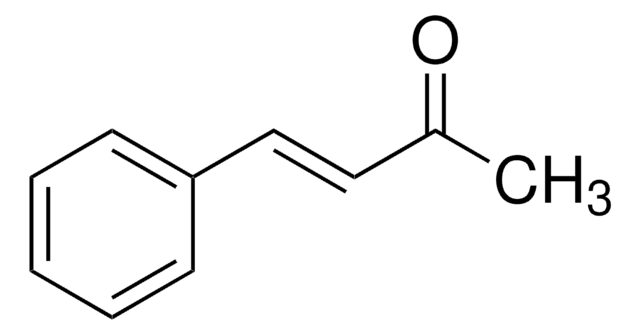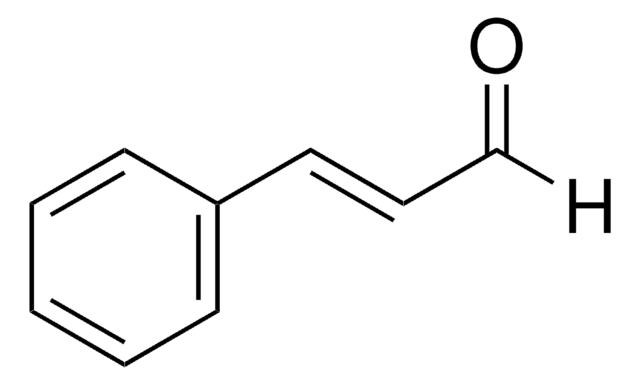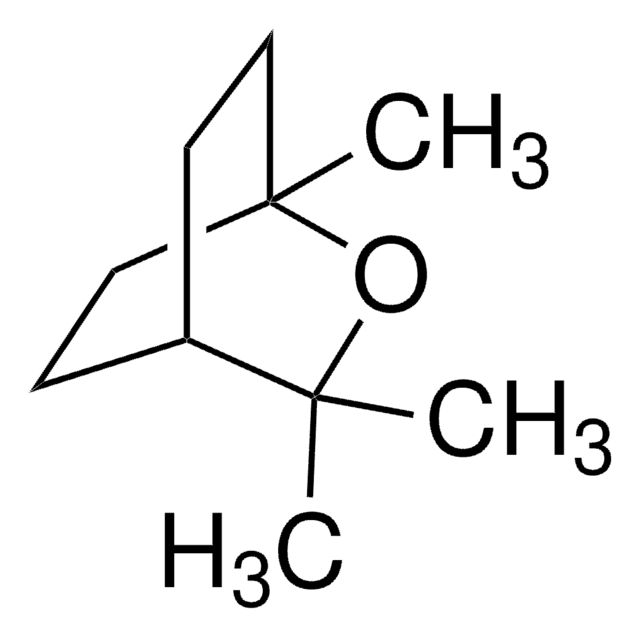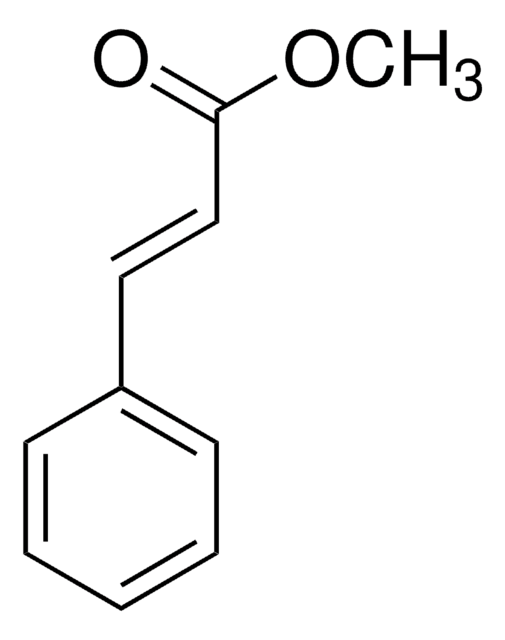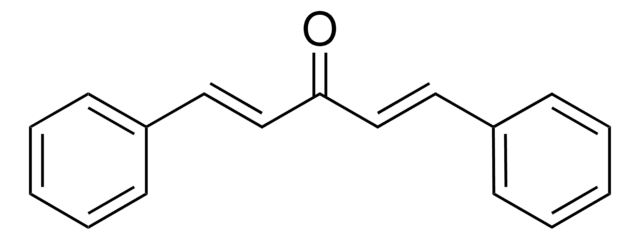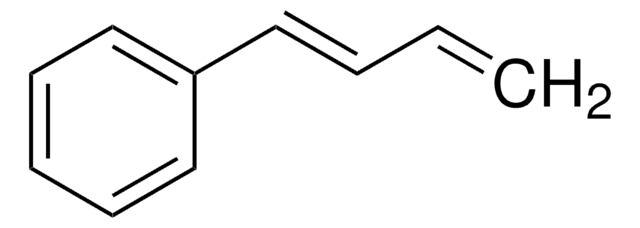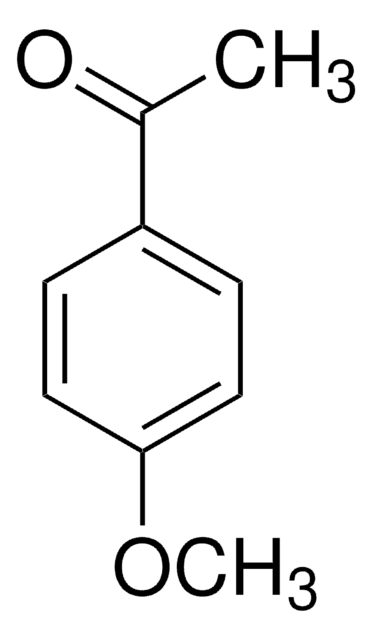W288101
Benzylideneacetone
≥98%, FG
Synonym(s):
Benzalacetone, 4-Phenylbut-3-en-2-one, Benzylideneacetone, Methyl styryl ketone
About This Item
Halal
Kosher
Recommended Products
biological source
synthetic
Quality Level
grade
FG
Halal
Kosher
agency
meets purity specifications of JECFA
reg. compliance
EU Regulation 1334/2008 & 872/2012
FDA 21 CFR 172.515
vapor pressure
0.01 mmHg ( 25 °C)
assay
≥98%
bp
260-262 °C (lit.)
mp
39-42 °C (lit.)
application(s)
flavors and fragrances
documentation
see Safety & Documentation for available documents
food allergen
no known allergens
organoleptic
anise; cinnamon; jam; balsamic; spicy; floral; sweet
SMILES string
[H]\C(=C(\[H])c1ccccc1)C(C)=O
InChI
1S/C10H10O/c1-9(11)7-8-10-5-3-2-4-6-10/h2-8H,1H3/b8-7+
InChI key
BWHOZHOGCMHOBV-BQYQJAHWSA-N
Looking for similar products? Visit Product Comparison Guide
Related Categories
General description
Biochem/physiol Actions
Other Notes
signalword
Warning
hcodes
Hazard Classifications
Skin Irrit. 2 - Skin Sens. 1
Storage Class
11 - Combustible Solids
wgk_germany
WGK 2
flash_point_f
253.4 °F - closed cup
flash_point_c
123 °C - closed cup
ppe
dust mask type N95 (US), Eyeshields, Faceshields, Gloves
Choose from one of the most recent versions:
Already Own This Product?
Find documentation for the products that you have recently purchased in the Document Library.
Customers Also Viewed
Global Trade Item Number
| SKU | GTIN |
|---|---|
| W288101-1KG-K | 4061834405047 |
| W288101-25KG | |
| W288101-SAMPLE | |
| W288101-10KG | |
| W288101-10KG-K | 4061834405030 |
| W288101-1KG | |
| W288101-25KG-K | 4061834405054 |
| W288101-SAMPLE-K | 4061834355809 |
Our team of scientists has experience in all areas of research including Life Science, Material Science, Chemical Synthesis, Chromatography, Analytical and many others.
Contact Technical Service